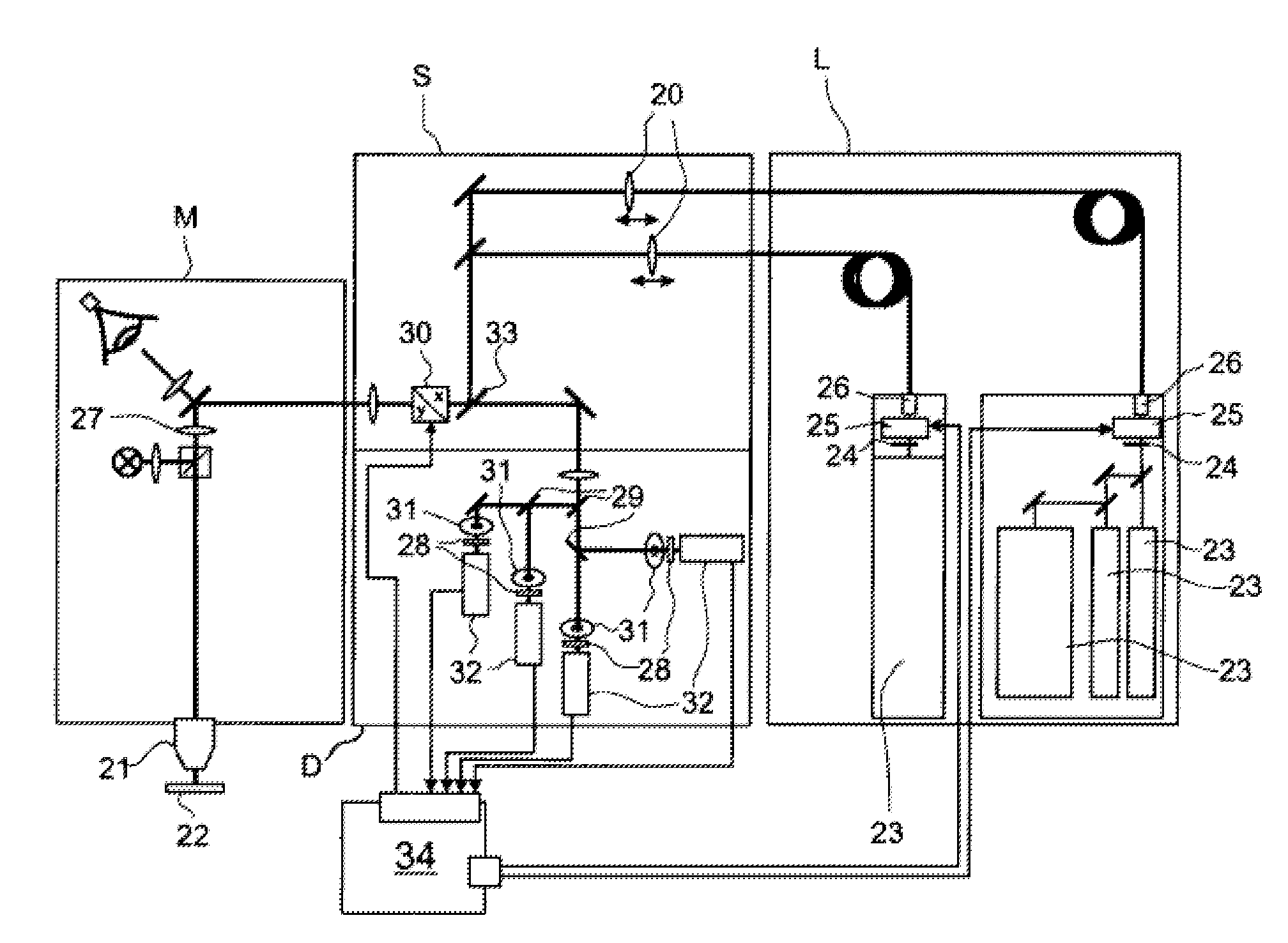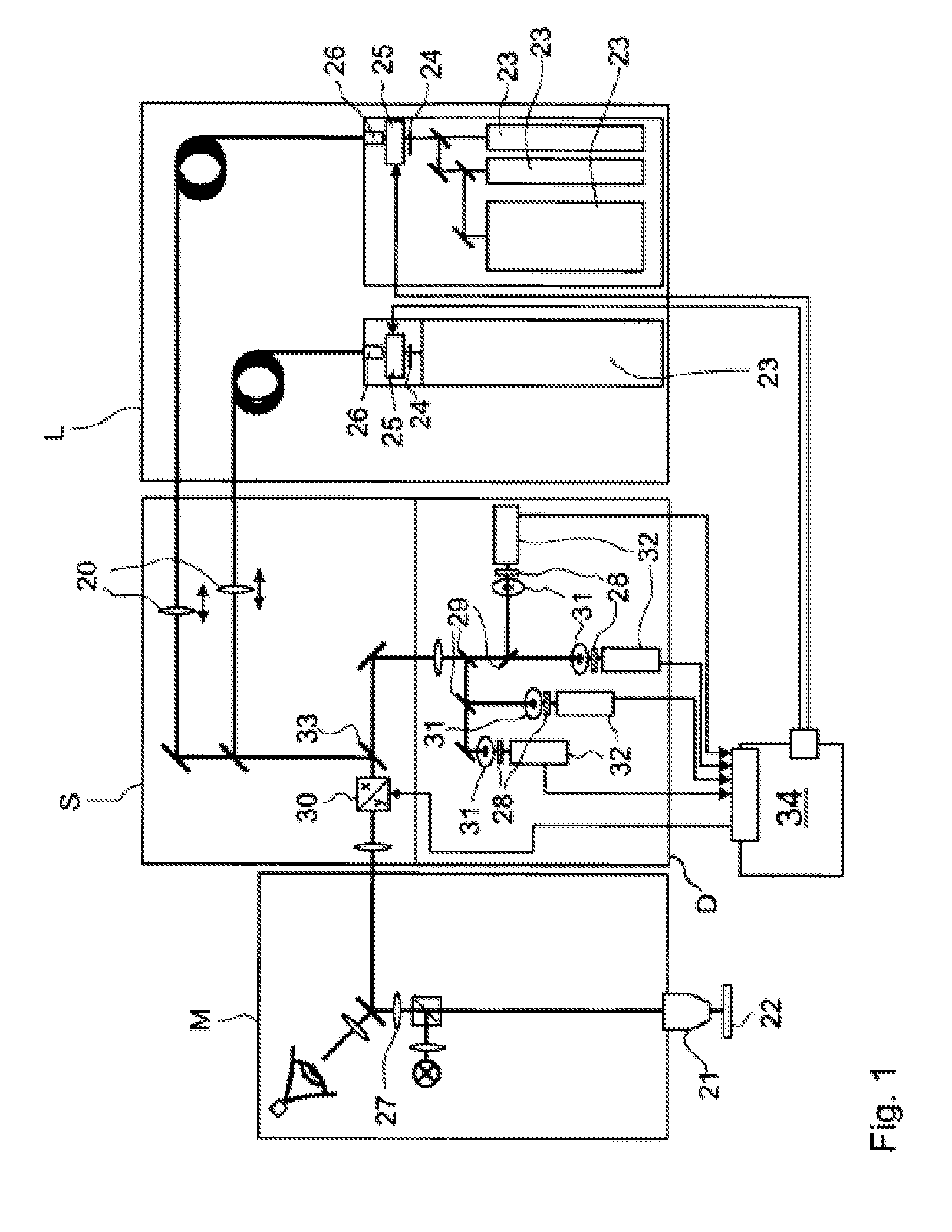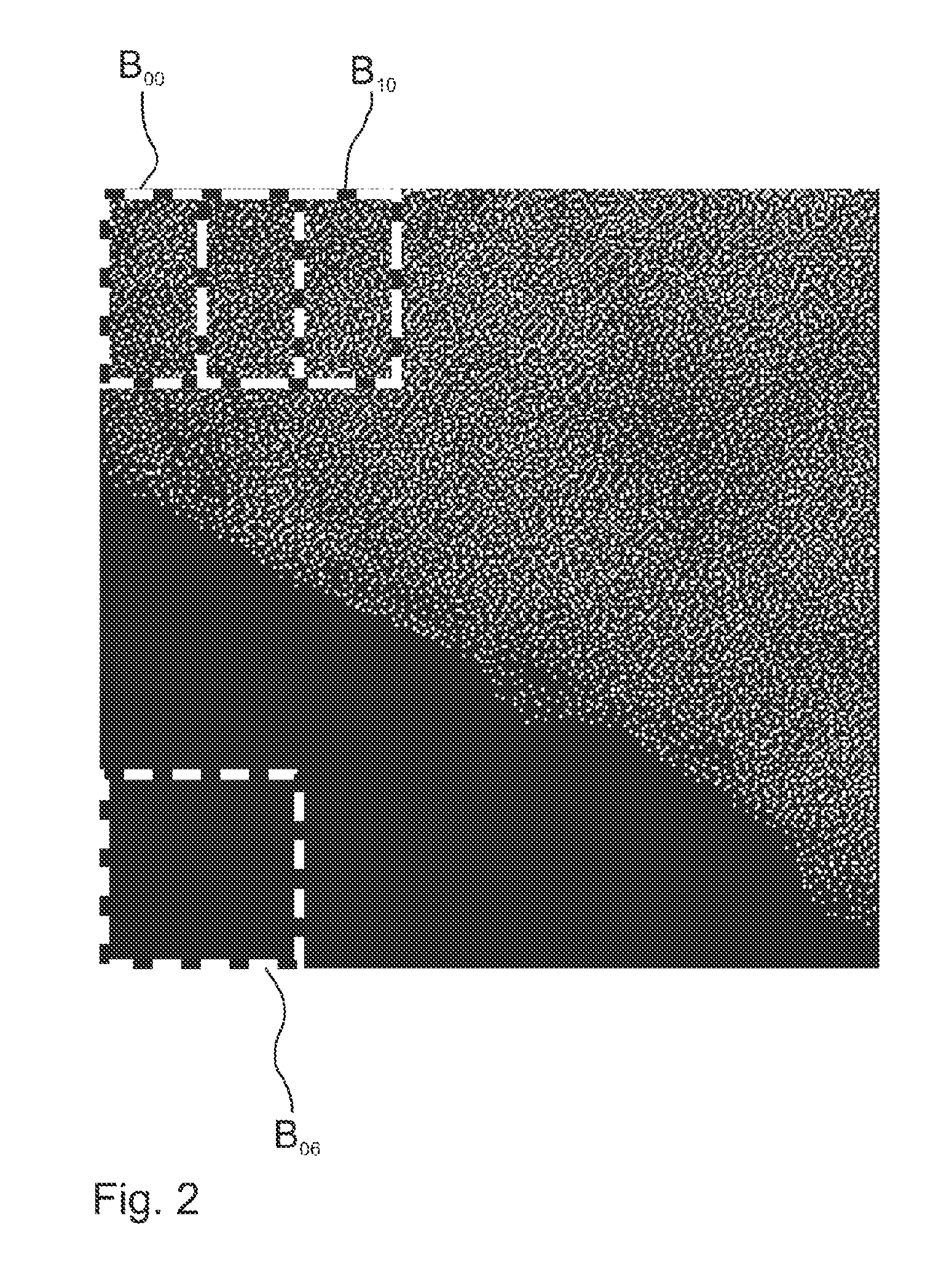Method for evaluating fluorescence correlation spectroscopy measurement data
a fluorescence correlation and measurement data technology, applied in the field of methods for evaluating fluorescence measurement data, can solve problems such as inability to use known methods, and achieve the effect of preventing unnecessary adjustment computations
- Summary
- Abstract
- Description
- Claims
- Application Information
AI Technical Summary
Benefits of technology
Problems solved by technology
Method used
Image
Examples
Embodiment Construction
[0034]In describing preferred embodiments of the present invention illustrated in the drawings, specific terminology is employed for the sake of clarity. However, the invention is not intended to be limited to the specific terminology so selected, and it is to be understood that each specific element includes all technical equivalents that operate in a similar manner to accomplish a similar purpose.
[0035]FIG. 1 is a diagrammatic view of an LSM (Laser Scanning Microscope) that is controlled using a control unit 34. The LSM is of modular design and consists of a lighting module L with lasers 23, a scanning module S, a detection module D, and the microscope unit M with the microscopic lens 21. The control unit 34 can influence the light from the lasers 23 through barn doors 24 and attenuators 25 before it is fed via optical fibers and coupling optics 20 into the scan unit S and concentrated there. The light passes via the main beam splitter 33 and the X-Y scanning unit 30 comprising tw...
PUM
 Login to View More
Login to View More Abstract
Description
Claims
Application Information
 Login to View More
Login to View More - R&D
- Intellectual Property
- Life Sciences
- Materials
- Tech Scout
- Unparalleled Data Quality
- Higher Quality Content
- 60% Fewer Hallucinations
Browse by: Latest US Patents, China's latest patents, Technical Efficacy Thesaurus, Application Domain, Technology Topic, Popular Technical Reports.
© 2025 PatSnap. All rights reserved.Legal|Privacy policy|Modern Slavery Act Transparency Statement|Sitemap|About US| Contact US: help@patsnap.com



